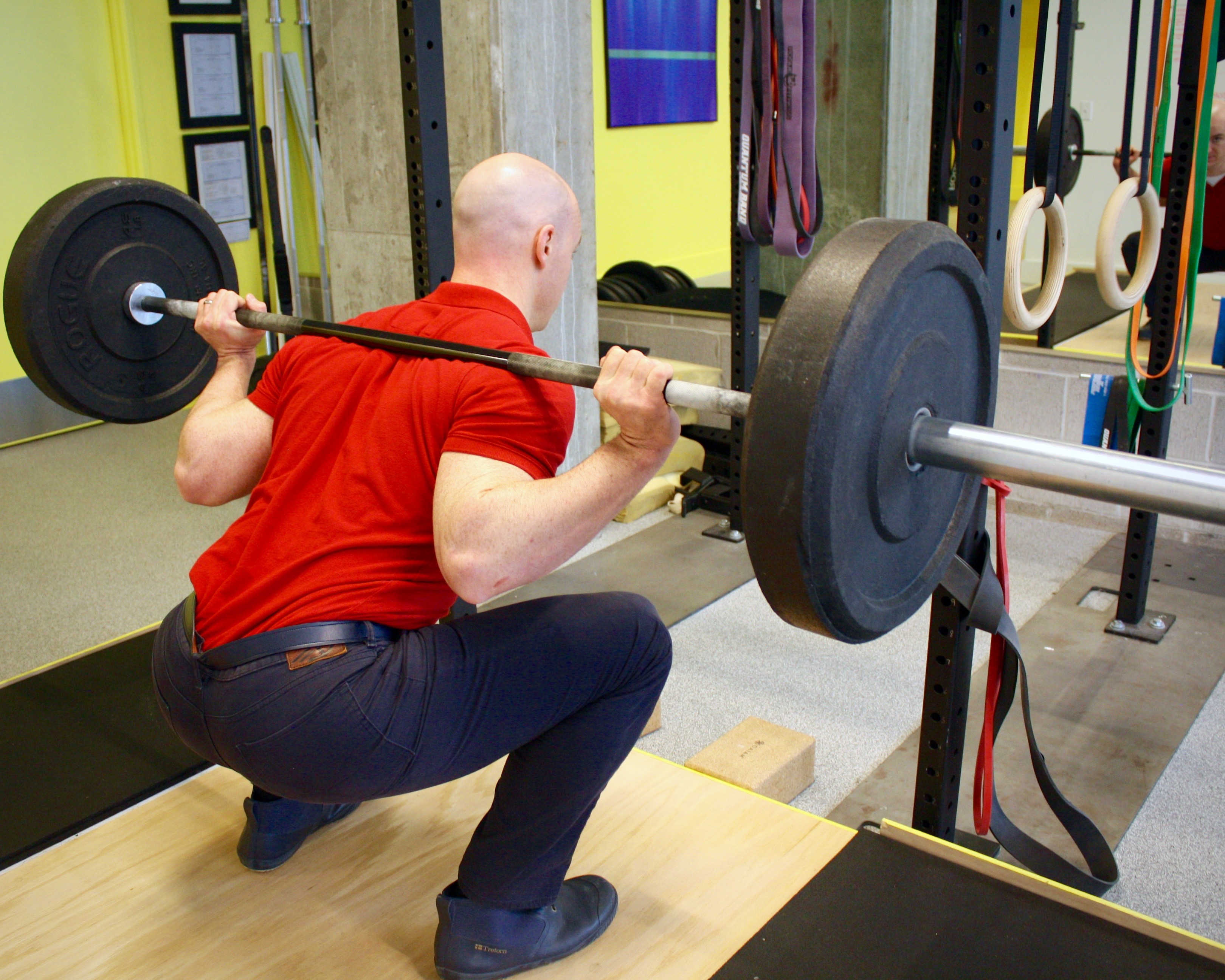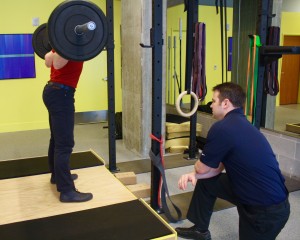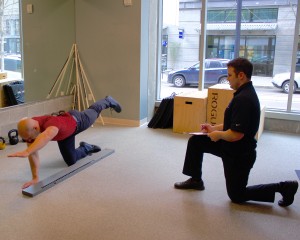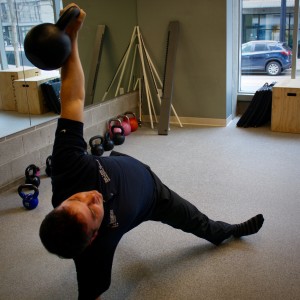
At Hosmer Chiropractic Health we pride ourselves on providing patients with a holistic approach to treatment which includes chiropractic care, massage therapy and physical rehabilitation. We find that the patients who incorporate all three of these modalities are the ones who get better the quickest and maintain this improvement the longest.
All of our patients have spent some time working with us in the rehab area on stretches, foam rolling or other exercises that are specifically designed to treat their area of pain. We often see patients get better quickly when utilizing their rehab, but once they start to feel better, rehab exercises and stretches are often discontinued.
Enter the “Enhanced” Rehab session.
The goal of the enhanced rehab session is to look at the potential underlying causes of why patients are getting injured in the first place. There are some instances like car accidents, falls or other traumas that can’t be avoided, but about 50% of our patients see us for non-traumatic, lifestyle-related reasons. These include things like neck and upper back pain from sitting at work all day, excessive soreness or injury from a workout, aches and stiffness from a weekend hike or game of basketball, and a host of other reasons.
Once these issues have been addressed through treatment at our clinic, the goal of the Enhanced Rehab Session is to bridge the space for our patients between their body’s current capabilities and the level of exercise they would like to aim for. We do this while correcting some of the lifestyle habits that created the injury in the first place, like improper lifting technique, for instance.
One of the largest issues with our society is that we don’t move much, and when we do, we often move in a way that has not been optimized, and does not take injuries and rehab into account. So the first step in our Enhanced Rehab Sessions is to get an overall baseline on how a patient moves. We do this by using a Functional Movement Screen.
During this screen patients are asked to complete seven different basic movement patterns which are assessed for pain and scored for quality. This gives us a snapshot of how you move, and also helps us identify potential dysfunctions which may be contributing to your issue.

For example, consider the runner with knee pain. A well-intentioned runner might be thinking they need to temporarily reduce their run distance from five miles to three miles and add some more squats and lunges into their routine to strengthen those leg muscles. On the surface, this seems reasonable, but did they consider that there might be a poor movement issue with their torso that they just reinforced 6,000 times during their 3 mile run? Or the fact that their squat form is so poor, that each repetition in the gym is actually making things worse? On top of that, “weak” leg muscles are probably not the reason why their knee is hurting in the first place!
This is why screening your movement patterns is so important, because we can identify and correct these issues and as world-famous physical therapist Gray Cook states, “don’t add fitness on top of dysfunction.”
Once we have established a movement baseline, we’ll give you specific exercises to help restore those faulty movement patterns. It’s amazing how quickly things can change.
Then we’ll chat about what you do in your everyday life. Are you stuck sitting at a desk all day? We’ll discuss some exercises and strategies to help improve your posture. Love hitting the gym after work? Let’s make sure your exercise form is correct. Are you rounding your low back every time you bend over to wash your face or when picking up your kids? Let’s make sure you know how to bend and lift things with proper form. Do you carry your stress and tension in your shoulders? Let’s talk about some proper breathing techniques.
By incorporating these small drills into your daily routine, we’ll keep you happy and healthier for longer.
Enhanced Rehab Sessions FAQs:
Who Benefits Most From The Enhanced Rehab Session?
Our goal is to help everyone from post-injury athletes to the regular joe who is interested in learning about how to get into fitness but not sure where to start.
How Long will it last?
30-60 minutes depending on the doctor’s recommendation.
Does insurance cover these sessions?
Most insurance plans will cover these rehab sessions but for specifics its best to check with the front desk.
What should I wear?
Please wear comfortable “workout” clothes, and also be prepared to work in your socks/bare feet.
What will we do?
We’ll usually start with a Functional Movement Screen, and then spend some time teaching you corrective stretches, exercises and other related drills based on your needs and the results of the Functional Movement Screen.
What will I come out with?
A customized plan of stretches, exercises and other drills tailored to your specific needs. These are usually things that can be incorporated into your current workout program or can be used as a stand alone option.
How many sessions will I need?
It depends. Some patients come in wanting to learn specific skills (e.g. how to deadlift) while other patients may need a little more direction. We often see great results with patients meeting us a few times up front and then checking in every few weeks or months as needed.
Will bribes in the form of food be accepted by Dan and Craig to make the session easier?
It’s entirely possible 🙂

